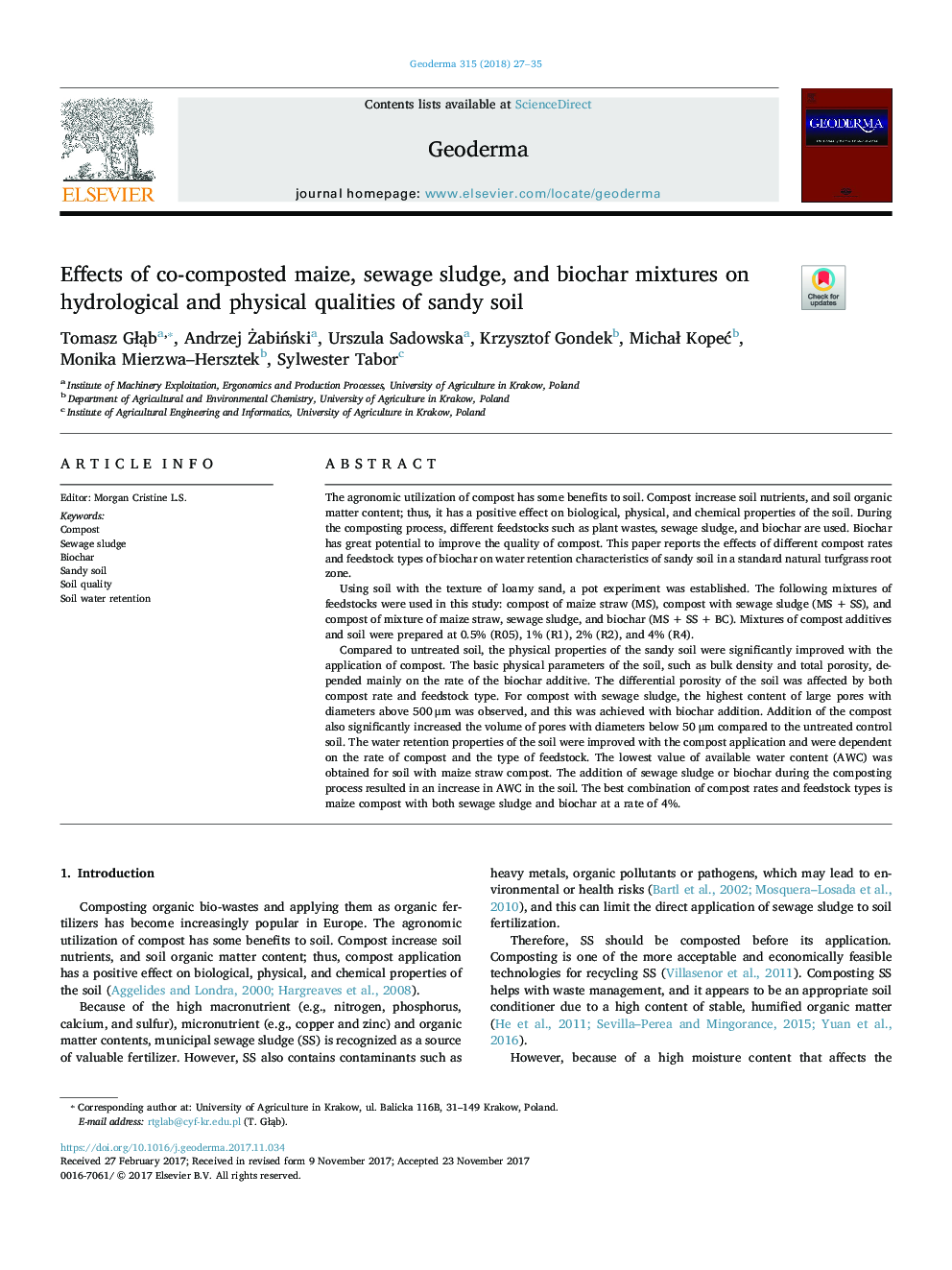| Article ID | Journal | Published Year | Pages | File Type |
|---|---|---|---|---|
| 8894235 | Geoderma | 2018 | 9 Pages |
Abstract
Compared to untreated soil, the physical properties of the sandy soil were significantly improved with the application of compost. The basic physical parameters of the soil, such as bulk density and total porosity, depended mainly on the rate of the biochar additive. The differential porosity of the soil was affected by both compost rate and feedstock type. For compost with sewage sludge, the highest content of large pores with diameters above 500 μm was observed, and this was achieved with biochar addition. Addition of the compost also significantly increased the volume of pores with diameters below 50 μm compared to the untreated control soil. The water retention properties of the soil were improved with the compost application and were dependent on the rate of compost and the type of feedstock. The lowest value of available water content (AWC) was obtained for soil with maize straw compost. The addition of sewage sludge or biochar during the composting process resulted in an increase in AWC in the soil. The best combination of compost rates and feedstock types is maize compost with both sewage sludge and biochar at a rate of 4%.
Related Topics
Physical Sciences and Engineering
Earth and Planetary Sciences
Earth-Surface Processes
Authors
Tomasz GÅÄ
b, Andrzej Å»abiÅski, Urszula Sadowska, Krzysztof Gondek, MichaÅ KopeÄ, Monika Mierzwa-Hersztek, Sylwester Tabor,
